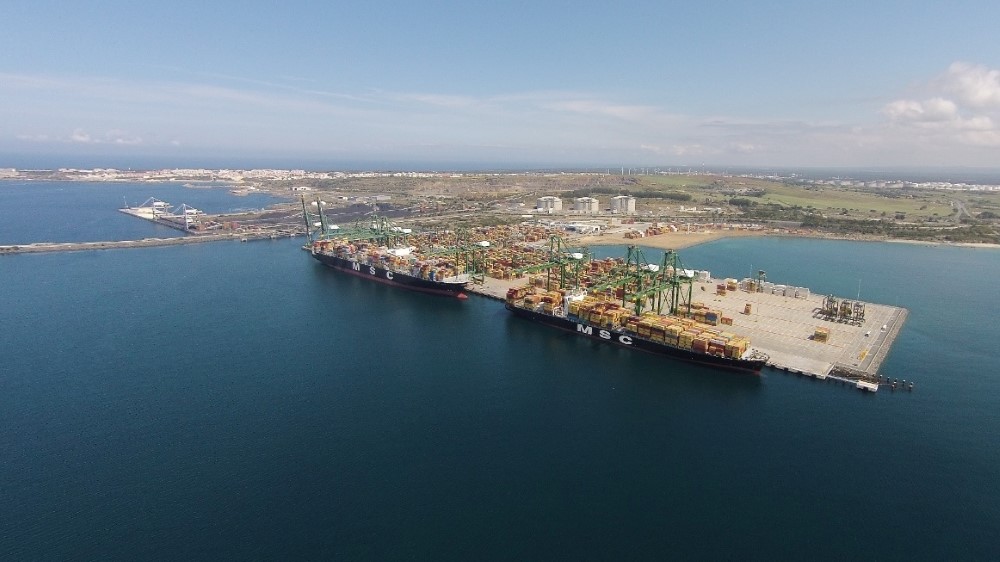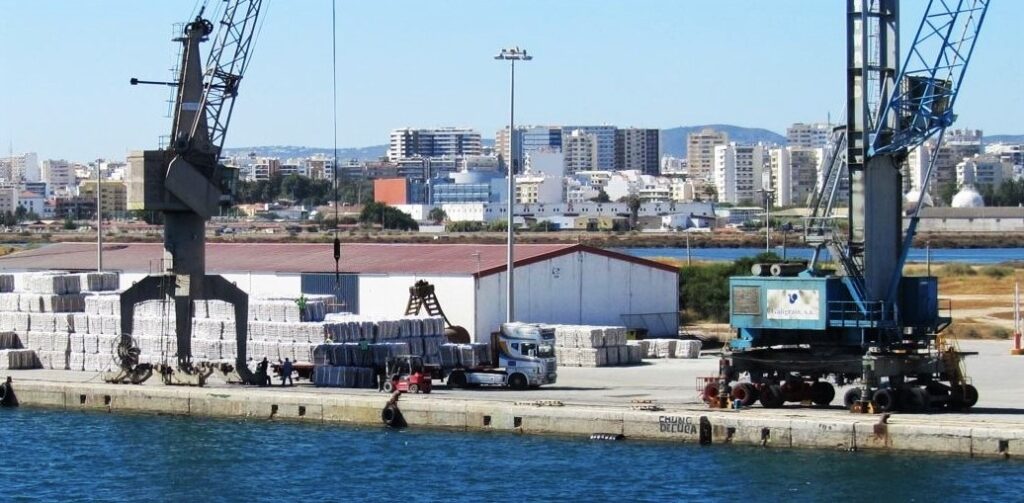the port of Faro it went against the national trend and, from January to August, moved 23,8 thousand tons more than what had happened in 2019, according to data revealed this Monday, October 19, by the Mobility and Transport Authority (AMT). The Port of Sines lost 1,21 million tons.
Between January and August of this year, the mainland ports handled almost 53,7 million tons, a decrease of 8,8% compared to the same period in 2019, which corresponds to a decrease of 5,16 million tons.
The global variation of the port system is explained by the negative behavior of most ports, especially Sines, which lost 1,21 million tonnes, as well as Lisbon, which recorded a decrease of 1,72 million tonnes, and Leixões , whose movement reflects a decrease of 1,56 million tons.
The only ports that have grown are, then, those of Figueira da Foz and Faro, whose movement reflects an increase of +21,6 thousand tons (mt) and +23,8, respectively, with respective percentage changes of +1,7% and +30,5%.
However, if we isolate the month of August, there is a 12% increase in cargo compared to the same period of the previous year, which is the total responsibility of the port of Sines, with an increase of 43,7%, reflecting, however, the circumstance that August 2019 recorded the lowest volume of the year, and annulling the negative variations of all other ports, namely Leixões and Lisbon, with respective decreases of 11,6% and 8,7%.
In this report, coal is pointed out as continuing to «have a negative influence on the performance of the port ecosystem, as no new imports of significant volume are expected to feed the thermoelectric plants of Sines and Pego, with the cessation of activity announced. for 2021'.
In terms of cargo markets, coal registered a global volume lower than the same period in 2019 of less 1,94 million tons (-81,1%), followed by petroleum products with less 1,65 million tons (-13,4%), crude oil with 508,6 mt less (-6,8%) and other bulk solids with 489,2 mt less (-9,4%).
Also agricultural products, ro-ro cargo (the cargo that enters the ship by its own means), fractional cargo and other liquid bulks registered decreases.
"Only containerized cargo and ores registered increases in the first eight months of the year, although with not very expressive values, which were centered on +111,2 mt and +81,4 mt, respectively", says the Mobility Authority report and Transport.
The behavior of containerized cargo results mainly from the performance of the ports of Sines, Setúbal and Leixões which, by recording, respectively, more 1,24 million tons, more 154,4 mt and more 128,6 mt, cancel out the decreases in Lisbon and Figueira da Foz.
With the exception of Lisbon, but whose causes are not foreign to the climate of labor instability, apparently the Containerized Cargo market is already in a recovery phase from the slowdown induced by the pandemic.

The port of Sines now holds an absolute majority share of 50,3% of the total movement of cargo handled, an increase of 2,3 percentage points over the same period of 2019, although it is still 4,1 pp less than its maximum recorded in 2016. Leixões remains in second place, with a share of 21,5%, followed by Lisbon (11,1%), Setúbal (7,9%), Aveiro (6,1%) and Figueira da Foz ( 2,5%), and Viana do Castelo, Faro and Portimão represent as a whole 0,6%.
In the first eight months of this year, the Containers segment recorded a total volume of 1,8 million TEU (Twenty-foot Equivalent Unit), a reduction of -2,6%, corresponding to -47,6 thousand TEU, and reflecting a recovery of 3,9 percentage points compared to the previous month.
This recovery follows an overall increase of +28,4% in August, with the decisive contribution of the port of Sines, which recorded a +69,3% variation, accompanied by +29% variations. in Setúbal and +8,6% in Leixões.
Setúbal and Leixões recorded the highest volume ever in the same period, with increases of +0,8% and +14,4%, respectively.
The port of Setúbal registered positive monthly changes for the sixth consecutive month, fluctuating between +11,1% in June and +44,9% in April. Sines closes the period from January to August with a total variation of +6,7%, corresponding to +65,1 thousand TEU. The increases in Sines, Leixões and Setúbal were not enough to offset the negative changes in Lisbon and Figueira da Foz, which rose, respectively, to -39,9% (-125,5 thousand TEU) and – 32,3% (-4,8 thousand TEU).
Also in the Container market, the port of Sines takes the lead to an absolute majority share of 57%, followed by Leixões, with 25,9%, Lisbon, with 10,4%, Setúbal, with 6%, and Figueira da mouth, with 0,6%.
Regarding the number of calls of ships, in the various types, the set of ports recorded in the first eight months of this year a total of 6280 calls, a decrease of 11,7% (-830 calls in total) compared to the same period of 2019, corresponding to a gross tonnage of around 112,7 million, 14,8% less than in the same period of the previous year.
This global behavior is the result of decreases in the number of calls observed in most ports, with Lisbon having made a strong contribution by registering -546 calls, including about 176 calls canceled due to the application of measures to combat the covid-19 pandemic.
These measures also had an impact on the ports of Douro and Leixões and Portimão, which registered a total decrease of 104 and 44 calls, respectively.
Only Figueira da Foz and Faro register positive variations in the number of stopovers, recording in August an increase of 9 and 6 stopovers, respectively.
The highest share of the number of calls in the total period of eight months is held by the ports of Douro and Leixões, with 26,1% of the total, followed by Sines (with 21,3%), Lisbon (17,8%), Setúbal (16,7%), Aveiro (10,4%), Figueira da Foz (5,1%) and Viana do Castelo (2,1%).
Help us to do the Sul Informação!
Contribute your donation so that we can continue to make your journal!
Click here to support us (Paypal)
Or use our IBAN PT50 0018 0003 38929600020 44



















Comments